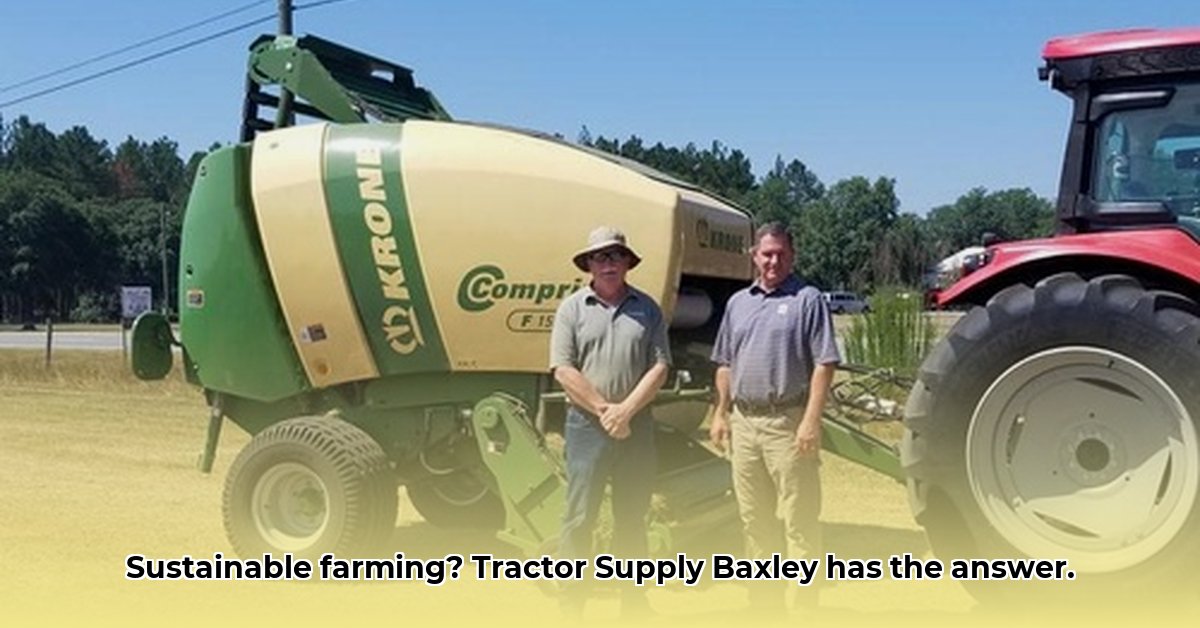
Tractor Supply in Baxley, Georgia, offers a range of products that could support sustainable agricultural practices. However, accurately measuring its impact requires a deeper dive into data currently unavailable. This article explores the store's potential contribution, highlighting both its strengths and the significant challenges in quantifying its effects on local sustainability. For comparison, see a similar store's efforts here.
Tractor Supply's Product Offerings and Sustainable Agriculture
The Baxley Tractor Supply store stocks an array of products relevant to sustainable farming. These include organic seeds, promoting chemical-free agriculture; water-efficient irrigation systems (if available), conserving a precious resource; and durable fencing, crucial for responsible grazing and animal welfare. High-quality, responsibly-sourced livestock feed is also available, supporting animal health and sustainable livestock management. These offerings provide local farmers and gardeners with readily accessible tools for environmentally-conscious practices. But how effectively are these tools being used?
Assessing the Impact: A Case Study in Uncertainty
While the availability of sustainable products is a positive step, precisely quantifying Tractor Supply's impact on local farming sustainability is challenging. We lack concrete data on several key aspects:
- Adoption Rates: How many farmers actively choose organic seeds or implement water-saving irrigation techniques?
- Environmental Outcomes: What are the measurable impacts of these choices—reduced pesticide use, improved soil health, or decreased water consumption?
- Supply Chain Transparency: What is the environmental footprint of the products themselves, from sourcing to packaging?
Without this crucial data, accurately assessing Tractor Supply's contribution remains difficult. The store provides the means, but the actual implementation and impact depend on individual farmer choices and wider systemic factors.
Challenges and Knowledge Gaps
The absence of comprehensive data hinders a complete understanding of Tractor Supply's role. Key unanswered questions include:
- Product Sourcing: What are the sustainability practices of Tractor Supply's suppliers?
- Packaging Impact: What is the environmental cost of the packaging materials used?
- Store Footprint: What is the store's own carbon footprint and energy consumption?
Addressing these questions is critical for a full evaluation of the store's environmental impact and a pathway to improvement.
Actionable Recommendations: A Roadmap to Greater Sustainability
To improve understanding and drive greater sustainability, the following actions are recommended:
- Tractor Supply: Implement customer surveys to gauge demand for sustainable products and gather feedback on product usage. Investing in data collection systems to track the sales and environmental impact of sustainable product lines is crucial. Collaboration with local agricultural researchers could provide invaluable insights.
- Local Farmers: Prioritize sustainable product choices when purchasing from Tractor Supply. Exploring cooperative buying power could lower costs and increase accessibility to sustainable options.
- Consumers: Become informed consumers who actively seek and support environmentally friendly products.
- Local Government: Implement incentive programs to reward businesses committed to environmentally responsible practices. This could include tax breaks or grants for supporting sustainable agriculture.
These multi-pronged actions are critical for a comprehensive approach to sustainability.
Conclusion: Collaboration for a Sustainable Future
Tractor Supply's Baxley location holds considerable potential in supporting sustainable agriculture. However, a clear understanding of its impact requires significant improvements in data collection and collaboration among all stakeholders. By combining effective data collection with proactive initiatives from the store, local farmers, consumers, and local government, Baxley can move closer to a more sustainable and vibrant agricultural future. The current lack of data underscores the need for a collaborative effort to create a robust system for assessing and enhancing progress.